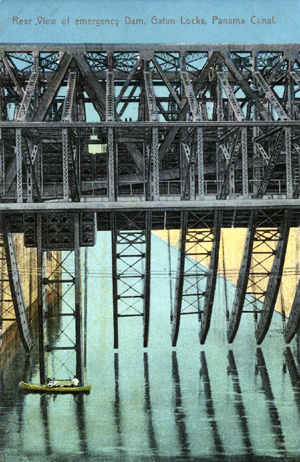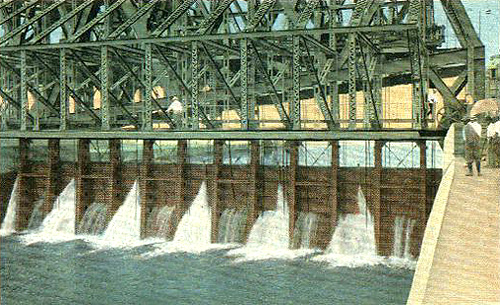|
Here is view of the original Emergency Dam being tested at the Gatun
Locks. In case an accident occurred to the locks gates, allowing a
free passage of water from the 85-foot lake level, to the sea level. the
dam would be swung across the lock chamber (as shown) and a series of
wicket girders hinged to it would be lowered with their ends resting in
pockets in the lock floor. Steel gates would then be lowered down,
one at a time, which would close the lock chamber and check the flow of
water. There were two emergency dams at each of the three locks on
the lake end or fresh water end.
In the Isthmian Canal Commission Annual Report for 1916, it
talks of having monthly drills to keep the Emergency Dam crew familiar
with different scenarios. They would test both at day and
night. If per chance there was an emergency, and due to the loud
noise caused by the rushing water, the whole operation was done in silence
and with hand signals. It states that "arrow signals were
installed near the gates on each girder so that the silver operators can
signal when the hooks are clear or in place on the gates."
The photo below shows the wicket girders in place and
the steel gates lowered.
In the late 1930's, the Special Improvement Project 7
(SIP 7) Emergency Dams replaced the original dams. The SIP 7 dam was
raised out of slot in the bottom of the Lock chamber hydraulically or with
compressed air. The SIP 7 Emergency Dams were retired in the late
1980's. Today, there is no emergency dams in use at the Panama Canal
Locks.
Another
part of our Canal Zone heritage now captured and preserved on the World
Wide Web!! Long live the glory and memory of our Zonian history!
|



